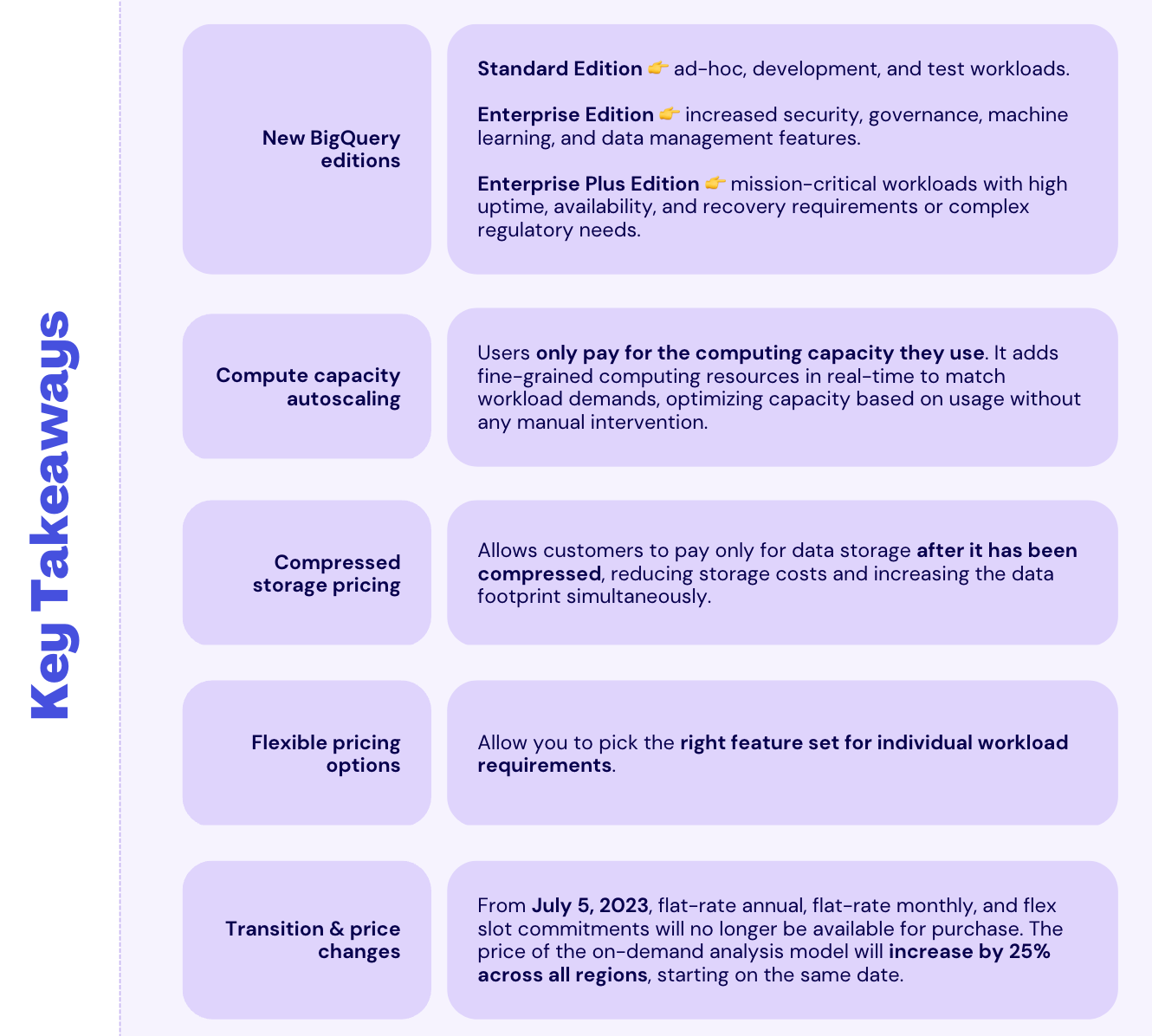Google Cloud has announced new BigQuery editions with flexible pricing options to cater to your team's diverse data needs. The 3 new pricing tiers are Standard, Enterprise, and Enterprise Plus.
At a high level, BigQuery took an autoscaling approach to pricing (as opposed to the market alternatives with upfront provisioning and unpredictable costs). Now, customers only pay for what they use.
These are just a few examples of folks who reap the benefits of this new plan:
🛍️ Retailers experiencing spikes in demand, scaling for a few hours a couple of times per year (i.e. Black Friday or Cyber Monday)
💰 Analysts compiling quarterly financial reports for the CFO
🤷 Startups managing unpredictable needs in the early stages of their business
🚀 Digital natives preparing for variable demand during new product launches
👩⚕️ Healthcare organizations scaling usage during seasonal outbreaks like the flu
How could it impact your Google BigQuery bill?
Storage-heavy customers may benefit from cost reductions due to compressed storage pricing, while companies with compute-heavy workloads might see costs increase. But these innovations, along with multi-year commitment usage discounts, can help lower the total cost of ownership. Note: AWS has not increased prices for existing services.
Google Cloud's new BigQuery editions provide flexible pricing options and features tailored to individual workload requirements. With compute capacity autoscaling and compressed storage pricing, customers can optimize their data workloads for price performance and minimize costs.
What’s the TLDR?
Don’t have time to read the full pricing change announcement? We’ve got you covered. Here’s a summary of the high-level takeaways to be aware of.👇

|
Next steps
Ultimately, your stored data is pretty much useless unless it’s actionable. 😬 Why not unlock customer insights in the warehouse and make them actionable in all your downstream tools? You know, where your business teams can actually use it.
🚀 Want to activate your data stored in BigQuery? Give Census a try. Book a demo to get started.

















